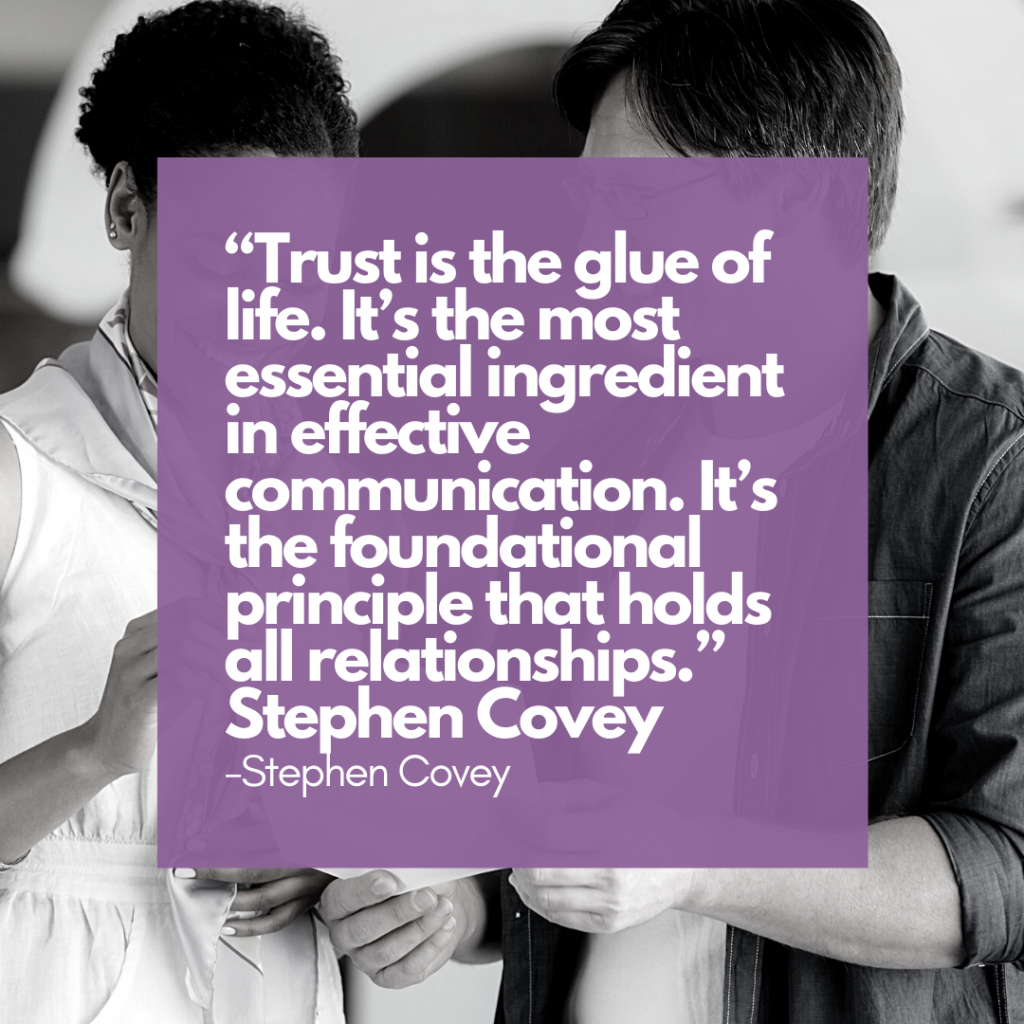Community is a vital element of vibrant company culture. Workplaces are made up of humans, and for all humans, the community provides a means of support. While we are not as tribal now as we once were as a species, our need for other people has not gone away. Whether it is receiving encouragement from a teammate, getting advice from somebody who has gone through your challenge before, or somebody simply pitching in to get things done – more and more work is getting done by teams now. And humans can accomplish so much more as a team. But how do you build a sense of community at work, especially now that many teams are working remotely? Whether in person or virtually, creating a culture with a strong sense of community will require you to build trust between individual employees and teams in the workplace.
Building Trust in your Community at Work
Price WaterhouseCoopers (PwC) reported that most CEO’s believe that a lack of trust will inhibit their organization’s ability to grow. Additionally, Paul Zak and his research team found that high trust organizations fare much better than low trust organizations. Comparing high trust to low trust organizations, they found 76% higher engagement, 106% more energy, 50% higher productivity, and 29% greater life satisfaction. That’s hugely important!
The Impact of Trust at Work
Trust also reduces negative work experiences, with high trust companies reporting 74% less stress, 13% fewer sick days, and 40% less burnout than low trust companies. Most simply, trust acts as a social lubricant; it really just makes everything easier. A big part of the ease that’s created by trust has to do with an absence of fear. In our work, people often joke about us singing Kumbaya and doing trust falls in our workshops. While we haven’t done this (yet), there is validity in the idea of trust falls! Consider the amount of fear you would have if you were to allow your body to simply fall backward, without having any visual confirmation of what was going to happen to you. Now, imagine that you allow yourself to fall backward having full faith that people were there to catch you. Picture Lady Gaga crowd-surfing at a concert here; at no point does she question if those hands will reach out to safely stop her from falling.

Now think about this same metaphor in the context of the workplace. What would happen if everybody trusted each other that much, that they could metaphorically fall back without looking and trust that others had their backs?
It means that we’re able to put our energy into problem-solving toward our collective, shared goals. Trust equates the absence of fear, which means greater tolerance for risk yielding increased innovation and creativity. And, as humans, we make better decisions when we reduce fear. When we make decisions rooted in fear, we manifest the very thing we are afraid of. Fear motivates us to survive, but we’re focused on helping companies thrive. That means leaders want to create environments that have high trust and low fear to enable the best decisions possible.
The Implications of Trust at Work
Additionally, a strong link has been made between trust and the hormone oxytocin. Oxytocin is a key hormone to our existence as humans, as it is a facilitator for childbirth and breastfeeding. But it has implications between humans beyond mother and child. In a study that investigated human behavior during a trust-based game with high interdependence, an intranasal administration of oxytocin increased the generosity, tolerance for uncertainty, and presumably trust between two strangers. This research demonstrates that we have a much greater willingness to help one another when we are in high trust environments. In today’s times, organizations are highly interdependent, and a team’s ability to collaborate is paramount to their success.
Trust is multifaceted, and it takes time to build. At Gallaher Edge, we dive into the process of building trust with our clients very early in the process. It’s a building block of Community that makes everything work. Learn more about the key elements to creating Community at Work on the Gallaher Edge blog.
Ready to take your leadership to the next level? Get your FREE copy of my eBook, Level Up: 3 Steps to Be a Better Leader. Click here to download!

